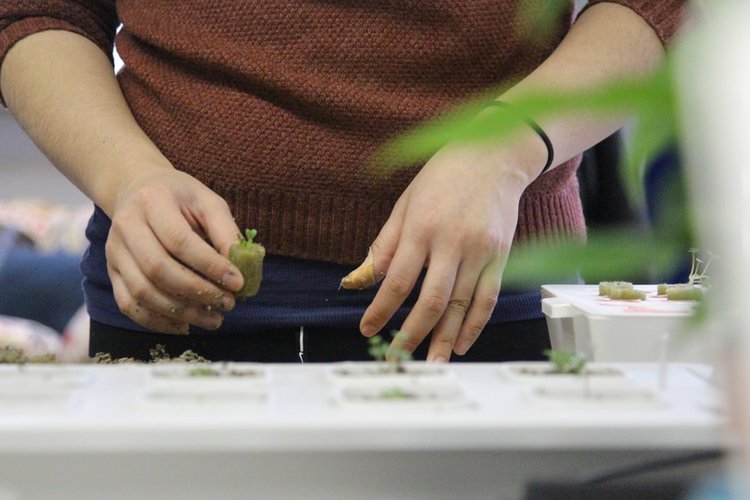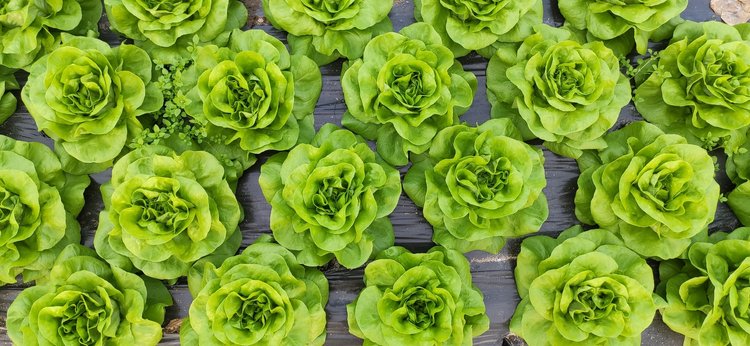

Food security has been a trending topic of discussion for quite some time now, yet the reality is that one in four people in the world experience moderate to severe food insecurity. That is roughly 1.9 billion people worldwide, which is 50x the population of Canada as of 2021! Moderate food insecurity includes those who struggle or worry about the ability to access or afford a healthy, nutritious balanced diet. There are a few major drivers of food insecurity, which include food prices, rising demand for food, climate change, availability of natural resources, and urbanisation and economic growth. With all of these threats looming over us, there has been an increase in innovations within agriculture to respond to the challenges faced by the agricultural industry. One prominent contender is vertical farming, which for some years now has been lauded as a great solution to food insecurity. With the increasing funding and popularity of vertical farming, is it the best answer to food security?
Vertical farming answers to the challenges of conventional farming
The major growing challenges with conventional farming is pollution from agricultural chemicals, water consumption, soil degradation, transportation of food, and efficiency/ yields. It is these problems that vertical farming has provided a solution for, a market that is expected to reach $12,77 billion by 2026. Vertical farming is the practice of growing crops indoors, stacked vertically in towers or trays, with the goal of minimising water use and maximising productivity by growing crops in nutrient-rich water in a climate-controlled environment.


By design, compared to conventional farming, some inherent benefits of vertical farming include:
Fertilizer is used in a much more controlled manner as it is introduced directly in the water, preventing the overuse of fertilizers and reducing the release of nitrous oxides.
Water is usually recycled through the system over and over, reducing water consumption.
Does not use soil, thus does not contribute to soil degradation.
The environment is completely controlled, thus optimising yields without being influenced by the outside climate.
With the growing concern around climate change, conventional agriculture is in a vulnerable state as the climate directly impacts productivity. In the UK, more than 80% of farmers said that they are experiencing more frequent extreme weather events on their farms, making yields fluctuate and hard to predict. By growing indoors, vertical farming like hydroponic systems provide near perfect conditions for a crop to grow regardless of the climate outside. In addition to the perfect climate, the direct access to nutrients and oxygen from the nutrient solution they are in contribute to the increased growth rate of the crops.This is a tremendous benefit for farmers living in areas that experience more climate fluctuations or even in areas that are unable to grow crops, such as deserts and cold climates not conducive for plant growth.
With 68% of the world population projected to live in urban areas by 2050, vertical farming becomes even more attractive, as the technology allows for production in tight spaces. With the benefits of higher yields and year round production capabilities that can be established practically anywhere, not currently possible with conventional farming, it has been heavily utilised by many big vertical farming companies by operating near or within big cities. This drastically cuts down the time required for food transportation, while lowering carbon emissions and improving the quality of the produce. Vertical farming also has the potential to help reduce food prices by shortening the supply chain.
Through the controlled environment and improved efficient use of space, vertical farming is lowering the usage of dwindling natural resources such as land and water. With water usage reduced by up to 95% compared to conventional farming and the ability to grow more food per square meter, it improves the efficient use of these resources for maximum productivity. Additionally, the tightly controlled environment avoids excess use of chemical inputs, mitigating the effects from environmental pollution and degradation.
Vertical farming approaches address several of the challenges of agriculture, and it is a valuable contributor to global food systems by being able to grow food faster, and better with minimal resource use. However, there is still a major challenge that it needs to address, and that is energy requirements and consumption.
Even though vertical farming can boast about the benefits it provides, there is a trade-off in the form of energy use. Indoor farming requires a staggering amount of energy with artificial light running up to 16 hours a day along with heating, ventilation and air-conditioning systems to maintain the appropriate growth environment.
Plants grow by converting energy absorbed by light into sugar, usually in the form of sunlight, thus the amount of light that is provided is indirectly linked to how many calories that can be produced. Therefore, by replacing the sun with LED lighting, we would have to convert KWh pricing to calories in the crop that is grown. For example, lettuces grown in traditionally heated greenhouses in the UK need an estimated 250kWh of energy a year for every square metre of growing area. In contrast, the same crop grown in a purpose-built vertical farm needs an estimated 3,500kWh a year for each square metre of growing area. One study even showed that yields of lettuce were around 11 times higher in a hydroponic system, yet the energy requirement was 82 times higher when compared to conventional agriculture. Therefore, in some circumstances, vertical farming can be disadvantageous from the carbon perspective due having a higher energy demand than field-grown food. These high operating costs along with a high upfront cost of establishing a vertical farming business means that to become economically viable, one would have to sell the produce as a super-premium product. This does not necessarily help lower food prices but rather creates an alternative for those people who can afford it, thus not really solving food security problems. However, in 2001, Shockingly Fresh completed a vertical farm in the UK that only uses sunlight to reduce the running costs associated with carbon-hungry LED lit vertical farms.
When looking at what is mostly grown in the vertical farms, a substantial portion of this consists of leafy greens. Taking Lettuce as an example, it contains roughly 15 calories per 100 grams, thus to feed a human that requires a daily intake of around 2,500 calories a day, that would equate to eating more than 16 kg of lettuce. When looking at the calories and prices of some hydroponically grown lettuce, Gotham greens lettuce and Dream Greens by Aerofarms price 125 g of the product at $4, which at an average calorie content of 15 per 100 grams, results in a calorie cost of around $0.2 per calorie, which ends up being $500 for the daily intake. Obviously, no one is ever going to live off lettuce alone, but it puts into perspective when we are talking about food security and looking into what methods we need to improve to feed the world. As it stands, hydroponics’ focus on leafy greens is not a viable solution to food security by itself, but a great nutritional supplementary food source to our diet.

Interestingly, when you look at the prominent vertical farming companies in the world, none of them mentioned the food crops that are high caloric staples that are at the heart of food security worldwide, which includes potatoes, wheat, maize, yams, and soybeans, that account for more than 45% of the total crops produced by weight worldwide. In contrast, crops that are known to be amenable to hydroponic growth systems including lettuce and chicory, cucumbers and gherkins, tomatoes, peppers and chillies all barely add up to 4%(FAO state, 2019, image below), which for the most part are still grown using conventional agricultural methods. However, the vertical farming technologies are making leaps and bounds, in terms of making them more energy friendly and constantly adding new crops under its belt. As the technologies improve, we can perhaps move onto producing more high caloric stables in these systems to further support the food security challenges. It might not be a standalone solution, but it is likely going to be an important part of solving food security.

*Hydroponic crops include crops that are amenable to this method but not necessarily done so, including cucumber & gherkins, tomatoes, peppers & chillies, spinach and lettuce & chicory. Calorie dense staples include rice, potato, maize, wheat, cassava and yams.

There is no one size fits all solution for the complex challenge of feeding the growing human population, but an interconnected food system that utilises an array of food production methods that fit each location and need. By tailoring agriculture in such a way, we can work towards food security that aligns with food sovereignty (Food security and food sovereignty - similar goals but different focus). Vertical farming in the form of hydroponics has strong merits to be able to be a part of the food security solution, particularly in remote areas, and where growing conditions are not suitable for growing crops outdoors, or in traditional greenhouse settings. It is important to note that foods produced need to be culturally appropriate as not all foods are universally wanted or important. With investment in agriculture and with constantly falling energy prices, technologies can allow vertical farming and other nascent technologies in the food production system to mature to the point of contributing significantly to food security problems worldwide. This can enable us to grow more non-traditional crops that allow people around the world to grow what is wanted and locally important to them, rather than a one model fits all.








